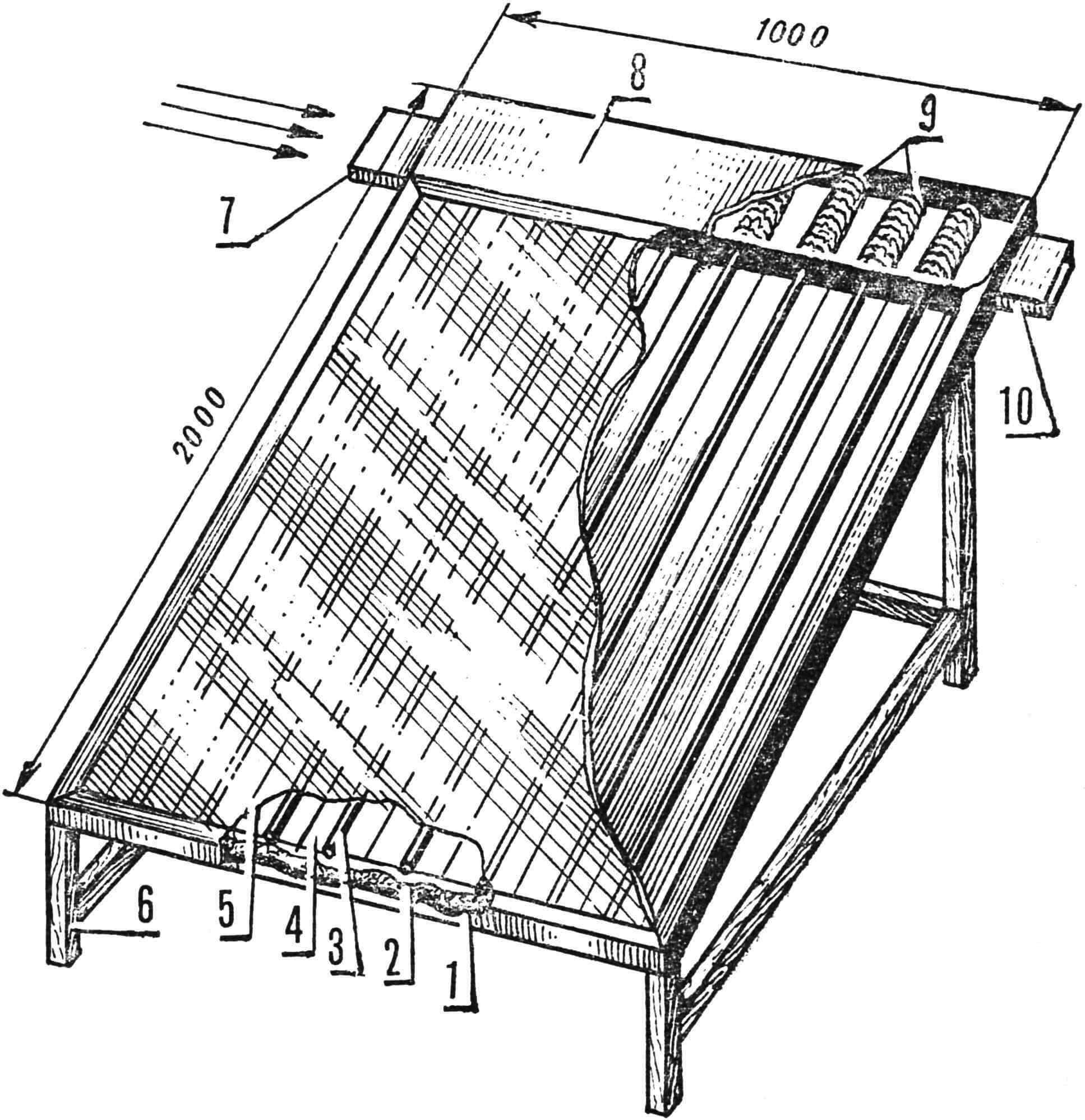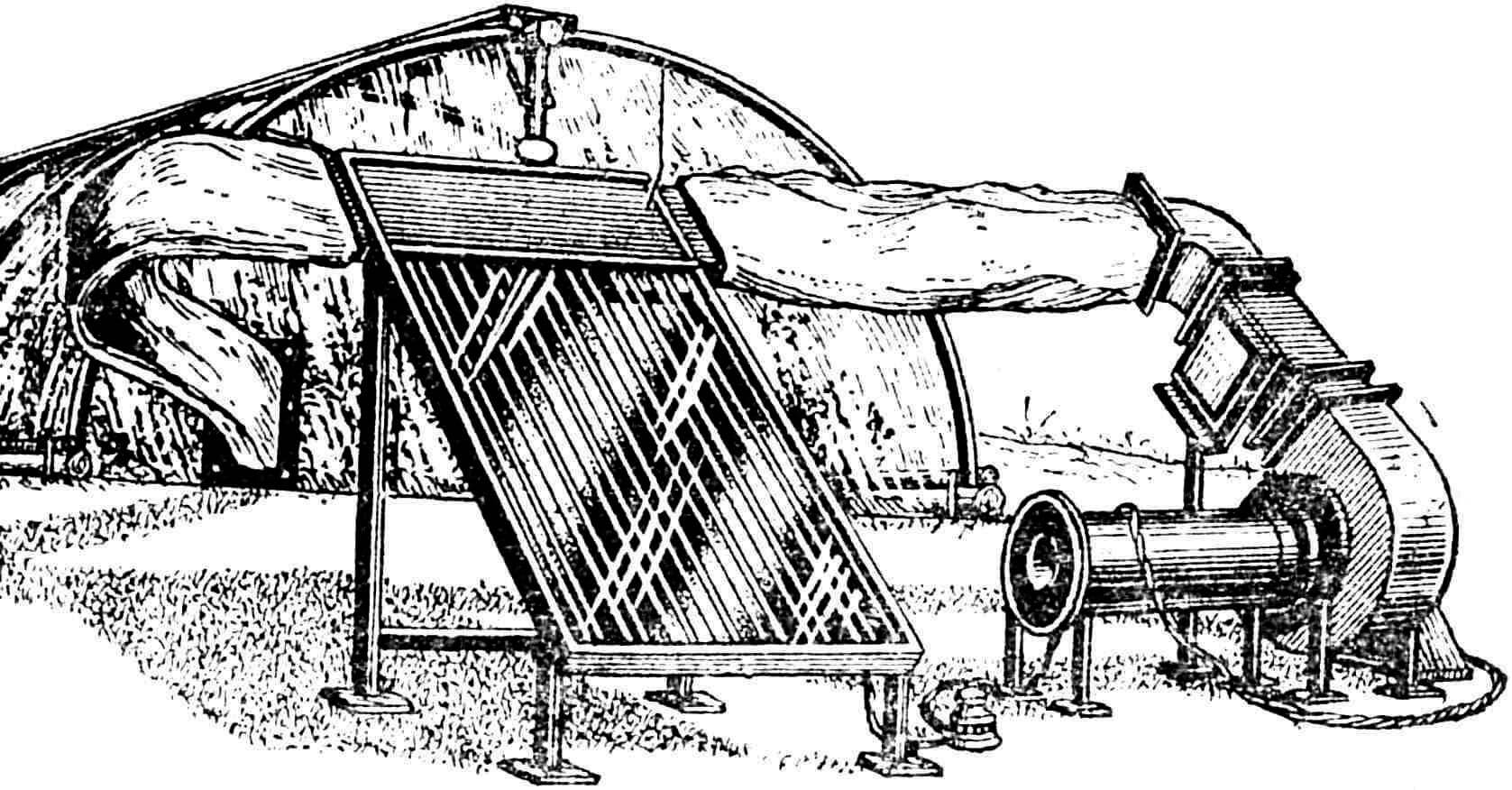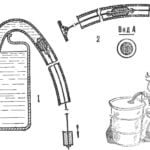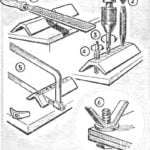Among the responses received to the All-Union competition “Small Mechanization” held by the editors together with the Central Committee of VOIR, there are many letters asking for the publication of designs for household installations using wind and solar energy.
The interest in these devices is understandable. It is caused by the vital need for this kind of auxiliary mechanisms for individual farms of rural residents, in vegetable gardens and gardening partnerships, and summer country houses. We have already introduced readers to some homemade products: let us recall articles about the solar automatic water pump “ Pump connected to the sun ” (“M-K” No. 3 for 1976), about the original water lift with a wind power plant “ Endless water lift ” (“M-K” No. 2 for 1985), about the solar roof heater “ Heliodomik ” (“M-K” No. 9 for 1986). We hope that the influx of such materials will grow in response to the editors’ invitation to amateur designers – participants in the “Small Mechanization” competition – to get involved in the development of such installations or to talk about various do-it-yourself devices based on wind and solar energy that have already been created and used by our readers.
The growing attention to this problem not only on the part of individual enthusiasts of technical creativity is evidenced by the lines of directive documents of recent years, and the fact that the first international exhibition “Energy Resources-87” was held in our country, which took place in the village of Proshyan, Armenian SSR. Enterprises and organizations from Bulgaria, Hungary, Finland, Greece, and Japan took part in it. It is significant that the companies participating in the exhibition presented mainly installations for more economical use or utilization of traditional types of energy (electricity, gas, solid fuels). Only the Greek company Firogenis showed its solar collector for heating water.
Let us note, by the way, that at the Central Exhibition-Fair NTTM-87, held in Moscow, unfortunately, not a single wind turbine or solar heater was shown. There is further evidence that amateur designers have an immense field of creativity open to them in the field of creating devices using non-traditional energy sources.
We bring to our readers descriptions of two designs, the diagrams of which can be taken as the basis for our own solar heater projects. The first was developed in the research and production association Armselkhozmekhanizatsiya, the second, as we have already mentioned, is an installation of the Greek company Firogenis .
The basis of the solar air heater is a solar energy collector – a tubular structure in which the energy of solar radiation is converted into thermal energy of the air flow circulating inside the pipes.
In existing domestic and foreign solar installations, solar collectors are used in various design options. They differ in the type of heaters, their number in the installation and coating material. Heaters, that is, heat carriers, can be solid, liquid or combined. Of the first, the best known are structures consisting of plate, tubular, coil, cylindrical or cellular elements.
As a liquid heater in industrial installations, a dilute salt solution, black waste oil, or other black liquid is used.
In addition, there are heaters made of mercury, absorbent material, fibrous material and a gaseous stream in which solid black particles are suspended.
A special class includes solar collectors in which heat pipes are used as heaters. The latter are a closed evaporation-condensation device, where the movement of liquid or steam occurs without the participation of special devices. To insulate from the effects of precipitation or cold air, such installations have transparent coatings – single, double or triple.
As a protective coating, various transparent films, thermal and ordinary glasses, parallel fused evacuated glass tubes, magnifying glasses, prisms – any transparent materials of any shape are used.
Existing air heaters using solar energy are used, as a rule, for heating rooms, heating air in greenhouses, and producing hot air in dryers.

1 — bottom of the case, 2 — insulation layer (foam), 3 — heat pipe, 4 — flat fin, 5 — protective glass, 6 — bracket-base, 7 — air duct inlet, 8 — heat exchanger, 9 — annular fins, 10 — air duct outlet.
The basis of a solar air heater is a solar energy collector, which can have a wide variety of designs. The main characteristic when comparing different collectors is their thermal efficiency. And it changes depending on many factors: operating temperature, coolant flow rate, solar radiation intensity, wind speed, collector inclination, and finally, ambient air temperature.
A comparative analysis of collectors used in the USSR and abroad showed that they have a number of design disadvantages: they are metal-intensive, occupy large areas and, most importantly, have a low efficiency.
An ideal collector should convert all solar radiation incident on it. This can be achieved, for example, by reducing convective losses and losses due to thermal conductivity. The properties of the absorbing surface also play an important role: its absorption coefficient in the solar spectrum should approach unity. The transparency of the protective coating is also of considerable importance, since the rays must reach the absorbing surface with minimal losses.
These requirements must also be taken into account when independently designing solar collectors based on heat pipes. An example of such an affordable installation solution is a solar heater (Fig. 1), developed at NPO Armselkhozmekhanizatsiya together with the Armenian branch of VNIIT. One of its advantages is that it consists of module blocks that make it possible to obtain installations of both small size and increased productivity due to the parallel connection of several such blocks into a multi-section solar air heater.
The collector module (Fig. 2) includes the following main parts and assemblies: an aluminum rectangular housing with an area of 2 m2 (eight heat pipes are placed in it), a translucent glass protective fence, a heat exchanger and thermal insulation.
Heat pipes in the zone of heating by solar rays are equipped with flat fins, and in the zone of condensation or heat transfer – ring ones. Freon is used as a coolant, but the circuit is also suitable for the option of filling with water. The heat-absorbing surface of the collector (heating zone) is covered with matte black paint. The principle of operation of a solar-air heating collector is as follows: solar radiation, passing through a translucent fence, is perceived by the heat-absorbing surface of black pipes with fins and causes heating and evaporation of the coolant (freon) inside them, which, rising upward, into the heat transfer zone, is cooled inside the heat exchanger, simultaneously giving off heat to the air flow blown here. The liquid formed during condensation (or cooled) returns under the influence of gravity to the heating zone, and the heat transfer process is repeated.
The temperature of the outlet stream of heated air can be changed by adjusting its flow through the heat exchanger: slow blowing gives a warmer stream, fast blowing produces a less heated one.
The multi-link solar air heating installation includes collector converters, connecting air ducts, an electric fan, a control panel with temperature and air flow sensors, as well as stands that ensure their installation at the optimal angle for the conditions of the given area.
S. OVSEPYAN, senior researcher at the mechanization laboratory of NPO Armselkhozmekhanizatsiya



